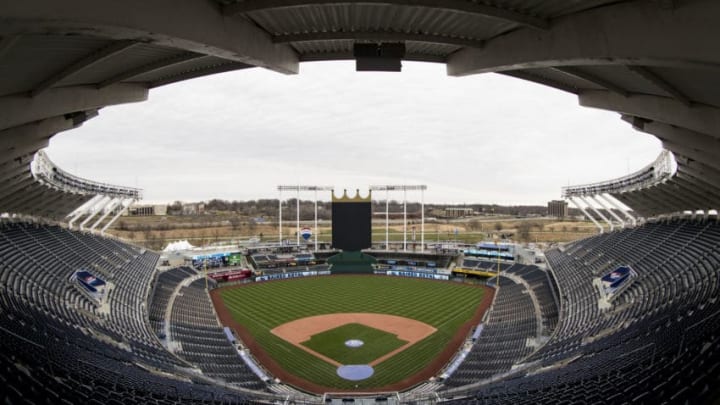In the midst of the slow KC Royals offseason, some fans may be wondering what is the plan and why the team hasn’t spent more money on quality free agents.
For some, more optimistic KC Royals fans (like myself), every offseason brings along the thought of another chance for the team to sign some big free agents and make the push for the postseason the following year.
Unfortunately, this is rarely how the offseason plays out in Kansas City. Typically, a few minor league contracts are signed, some players are brought back to the team, and some overpaid reclamation projects are signed to year-long contracts, hoping for a flip in July.
In the defense of the Royals, these reclamation projects do at times work out, but typically, the players are sent on their way with little to no return and fans move on to the next player and start the cycle over again.
While it would be nice to sign the big-name players worth hundreds of millions, for a team like the Royals, it’s just not going to happen. With the current state of the team, losing 100 plus games two years in a row, it might be in their best interest to save their money and focus on what they have coming up.
There tends to be some conversations start throughout the offseason and beginning of the regular season regarding how much each team is spending for payroll. Some go in-depth as to which players are making how much, but others focus on the outer layer, sometimes being suggested that the higher the team’s payroll the better off.
While there is a probably decent amount of correlation that can be found to back this up, this thinking sparked a desire to know what the Royals spent in years prior to winning the World Series. Thankfully, Spotrac makes it easy to see the overall payrolls of the team.
So looking back, the payrolls for the Royals from 2011-2014 are as follows: 2011- $40,603,273; 2012- $70,344,235; 2013- $85,398,434; 2014- $98,558,300.
Now, 2015 jumped up to $126,529,835, but the team also saw some larger contracts and a larger veteran presence during that season. While just merely looking at the overall payrolls and not going any deeper in detail is a fairly shallow basis for an argument, it’s important to note the players who took up a majority of the roster in these seasons.
Most players were pre-arbitration or entering arbitration, while there were a few veteran players sprinkled throughout the lineup. The veteran presence grew as the likelihood of contention grew, but still, the payroll stayed fairly low.
I suggested recently that Dayton Moore not waste money on pointless signings, and as I continue to do some research I lean more and more into that point of view. A signing for the future and that will really help is fine, but it’s time to start seeing what the farm has to offer.
With spring training close, the Royals announced their list of non-roster players invited to spring training. Not only are there some young players looking for their chance on the 40 man, but this list of non-roster players is also packed full of talent, especially in the pitching department.
While it’s fun to think of some big-name players the Royals could acquire through free agency, the quiet nature of the team may be exactly what the organization needs to get back on the road to contention.
There will likely still be some years of trial and the post-season may not be an immediate venture, but looking to the prospects is likely in the best interest of the small market Royals. Following the plan of the years leading up to 2015, let the young guys battle it out and see who rises to the top.
While there will inevitably still be a few holes to fill, that’s when the money can start flowing again. Now, there is much more to this and unfortunately, baseball is not so black and white. Looking at previous years, though, the Royals deciding to not break the bank may be a step in the right direction and the next move to put the team on the path to the postseason.
It can be thought that by spending the most in the offseason or having the highest opening day payroll will mean that the team will be better, but in the case of a rebuild, those small-market teams who start low may just be able to fight that thought and prove money isn’t everything.
Spring training should be interesting to watch this year and fans may get to the future of the Royals starting to develop as the young core of the farm system starts to make their way to the top. It’s always nice to think of spending big, but for Kansas City, it might be best to just save it now, and spend big later.
